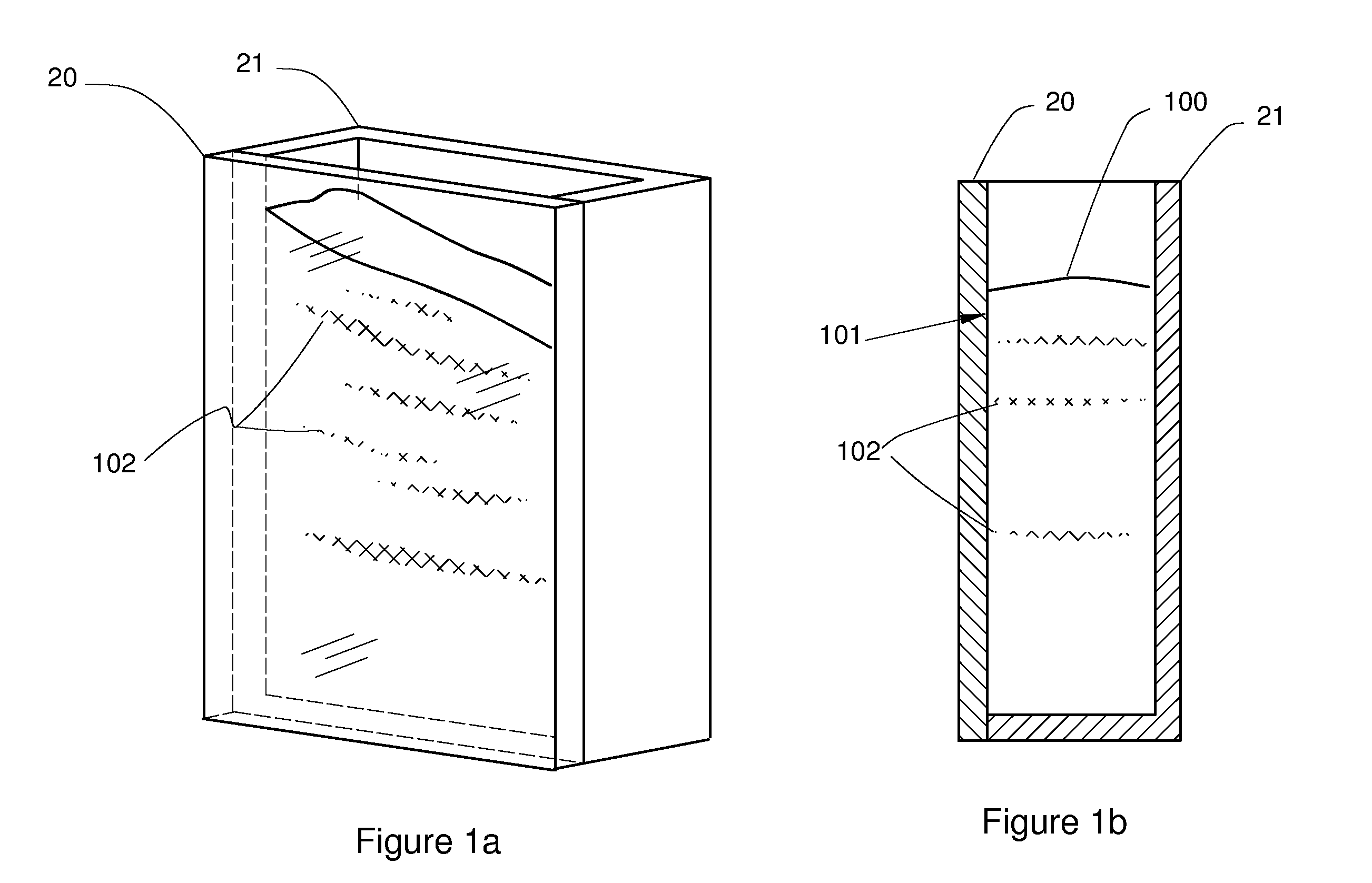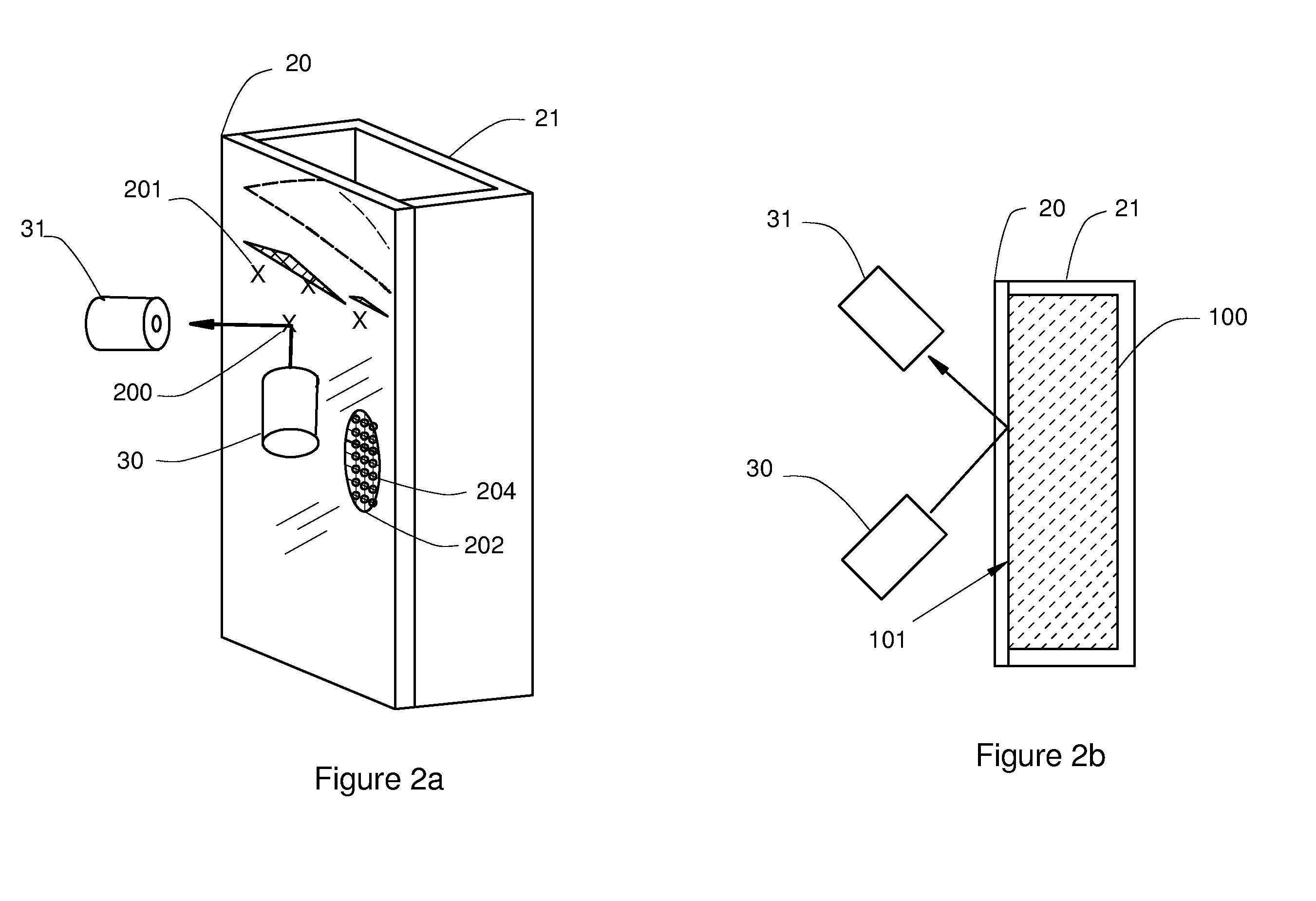Mixture Segregation Testing Devices and Methods
a technology of segregation testing and mixing, applied in the direction of optical radiation measurement, instruments, spectrometry/spectrophotometry/monochromators, etc., can solve the problems of significant segregation problem, non-uniformity within a volume of mixture, and spatial stratification
- Summary
- Abstract
- Description
- Claims
- Application Information
AI Technical Summary
Problems solved by technology
Method used
Image
Examples
Embodiment Construction
[0021]FIGS. 1a, 1b illustrate a segregated mixture contained behind a photometrically transparent barrier 20 according to the invention. To enable obtaining data, a mixture of interest is retained as a stationary volume 100 bounded by a photometrically transparent barrier 20. Herein, the term “photometrically transparent” or more simply “transparent” means a barrier that allows transmission of light within a specified or known spectrum without appreciable absorption at any wavelength within the spectrum.
[0022]In the figures, the mixture volume 100 is retained within a closed container 21 incorporating the transparent barrier 20. In some applications, a closed container 21 may not be necessary so long as the proper mixture segregation can be obtained in the volume 100 with respect to the barrier 20. The mixture volume 100 is formed such that segregation in the mixture at the surface 101 of the volume 100 adjacent the barrier 20 is representative of a mixture and process of interest. ...
PUM
 Login to View More
Login to View More Abstract
Description
Claims
Application Information
 Login to View More
Login to View More - R&D
- Intellectual Property
- Life Sciences
- Materials
- Tech Scout
- Unparalleled Data Quality
- Higher Quality Content
- 60% Fewer Hallucinations
Browse by: Latest US Patents, China's latest patents, Technical Efficacy Thesaurus, Application Domain, Technology Topic, Popular Technical Reports.
© 2025 PatSnap. All rights reserved.Legal|Privacy policy|Modern Slavery Act Transparency Statement|Sitemap|About US| Contact US: help@patsnap.com



